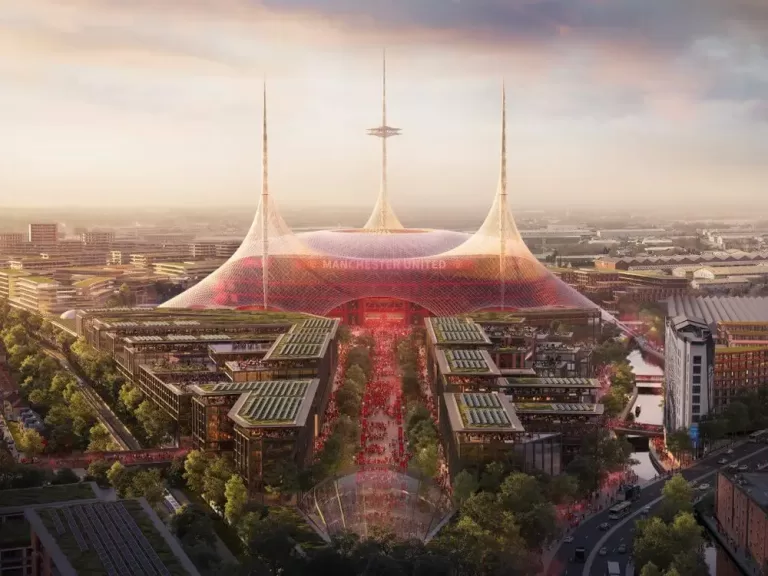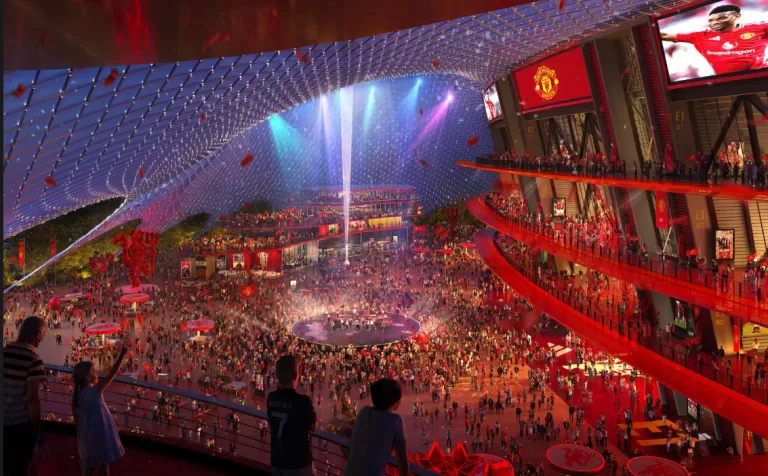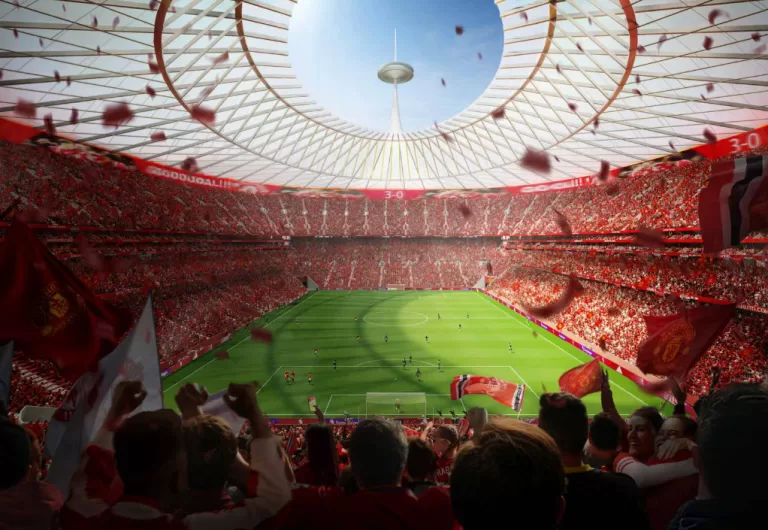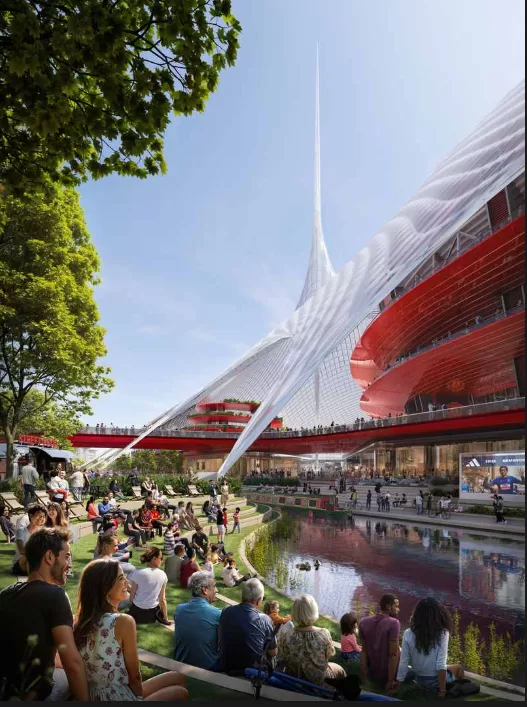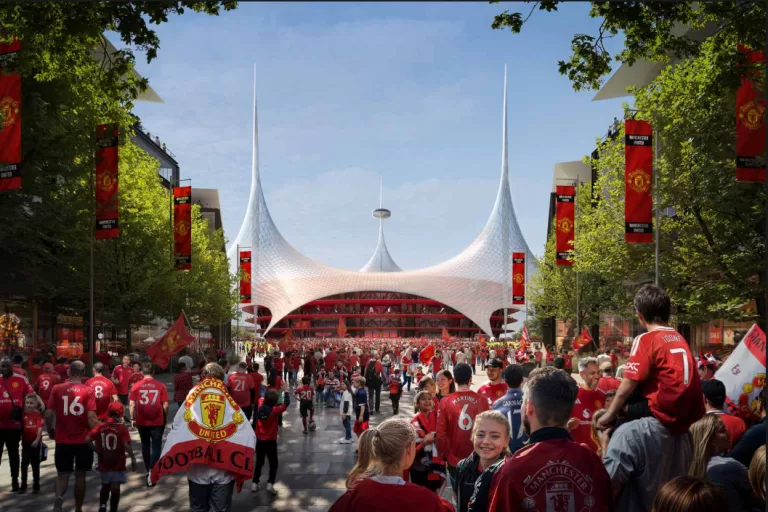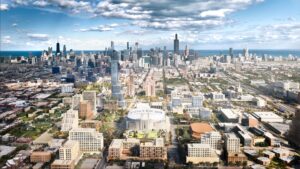100,000 seat new Man U Arena will be Britain’s Largest | Living Lab
New Man U Arena Unveiled
Britain’s Largest 100,000-Seater Stadium to Redefine Football Excellence
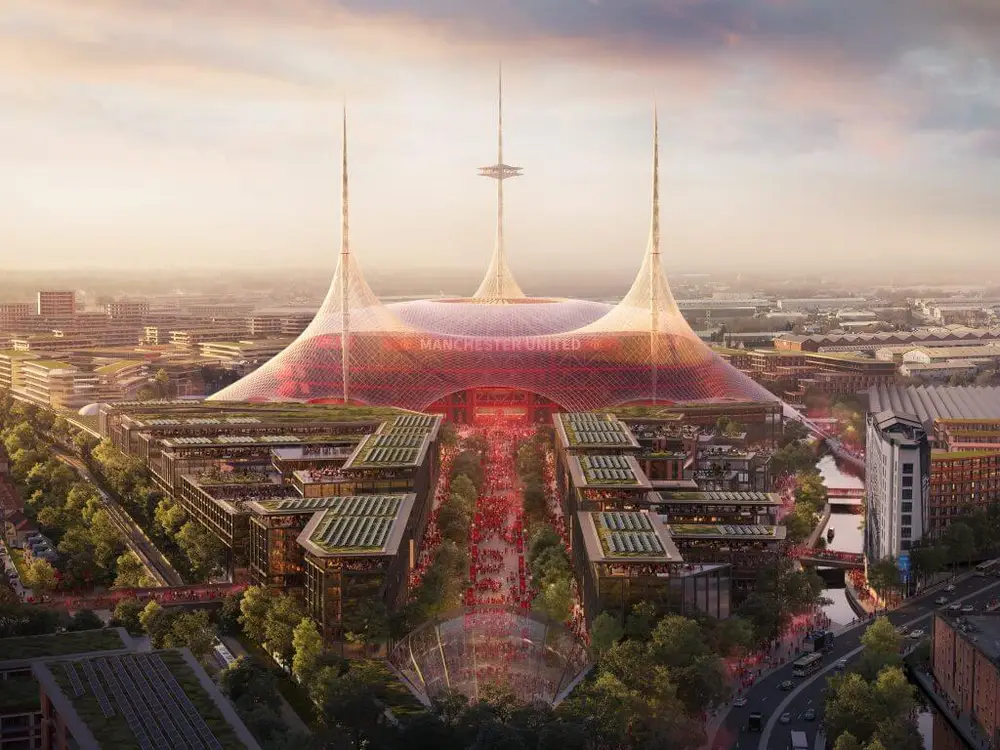
The End of Old Trafford. The future of Man United Begins Here
Manchester United’s £2 billion investment in the New Man U Arena marks a pivotal moment for Manchester united. Designed by Foster + Partners, the 100,000-seater stadium—Britain’s largest—will redefine fan experiences, elevate sponsorship opportunities, and stimulate significant economic impact.
- It will be the become the tallest building in Manchester, with the tallest mast at 200m in height. Currently, the Beetham Tower is the tallest at 169m. The Wembley arch, by comparison, reaches a height of 135m.
- It will be the second largest football stadium in Europe – second to the Nou Camp in Barcelona
- £7.3 billion annual contribution to the economy
- The new Stretford End will have a capacity of 23,500, over twice the size of Tottenham’s South Stand.
- 15.5 per cent of the seats in the new stadium will be hospitality
- The club claim the new stadium will be visible from the Peak District, Cheshire and the outskirts of Liverpool.
What do we know? What can we learn?
GET IN TOUCH
Living LAB Socials
A Stadium design for Manchester United's future
The proposed stadium’s design is both innovative and symbolic. Featuring three towering masts that represent the club’s iconic trident, the structure will be covered by a vast umbrella-like canopy. This canopy is not merely aesthetic; it is engineered to harvest energy and collect rainwater, underscoring the club’s commitment to sustainability. The surrounding area is envisioned as a walkable, mixed-use district, seamlessly integrating the stadium into the urban fabric and providing year-round amenities for both fans and residents
Sports Stadia as anchor for urban Regeneration
Beyond its architectural grandeur, the new stadium is poised to deliver substantial economic benefits. The project is expected to inject approximately £7.3 billion annually into the local economy and create around 92,000 jobs, significantly boosting employment opportunities in the region. Plans also include the development of 17,000 new homes, contributing to the broader regeneration of the Trafford area.

Informed by Manchester’s rich industrial heritage, the ambitious sports-led regeneration project aims to revitalise a one-million square metre brownfield site, transforming it into a dynamic, mixed-use district. This visionary development will feature an interconnected network of green civic spaces, pedestrian-friendly streets, architecturally striking bridges, and vibrant waterfront areas.
Setting a new global benchmark for sustainable urban design, the project will establish direct transport and pedestrian links that seamlessly connect emerging neighbourhoods with existing communities and the wider city. Emphasising environmental responsibility, the masterplan incorporates innovative solutions for rainwater harvesting and renewable energy generation.
A pivotal catalyst for the project’s momentum could be the potential removal of freight trains from the West Coast Main Line. This move would increase passenger capacity to Manchester Piccadilly and the broader North-West region, enhance rail connectivity with Liverpool, and unlock critical land opportunities for the creation of the Old Trafford Stadium District—reinforcing Manchester’s status as a hub for sustainable, community-driven urban development.
Greater Manchester Mayor Andy Burnham has been a vocal advocate for the project, seeking over £200 million in government funding to support the regeneration efforts. He emphasizes that the new stadium could serve as a linchpin for broader economic revitalization, attracting further investment and enhancing the area’s appeal.
Timeline and Development Phases
- There is no confirmed starting date.
Ratcliffe says the project will depend on how ‘quickly’ the government are with kick-starting their regeneration project of the area.
“On the timeline for this, it starts with a discussion,” said Ratcliffe.
Groundbreaking: Scheduled for late 2025, marking the commencement of construction.
Opening: Targeted for the 2030-31 football season, aligning with the club’s strategic vision.
Old Trafford’s Legacy: Post-transition plans for Old Trafford are under consideration, ensuring its historical significance is honored.
A Visionary Design for the Future
Foster + Partners’ design reimagines the stadium experience with three monumental masts symbolising United’s heritage. These pillars will support a vast canopy, creating both an architectural landmark and premium advertising opportunities that maximise sponsor visibility.
The proposed stadium’s design is both innovative and symbolic. Featuring three towering masts that represent the club’s iconic trident, the structure will be covered by a vast umbrella-like canopy. This canopy is not merely aesthetic; it is engineered to harvest energy and collect rainwater, underscoring the club’s commitment to sustainability. The surrounding area is envisioned as a walkable, mixed-use district, seamlessly integrating the stadium into the urban fabric and providing year-round amenities for both fans and residents.
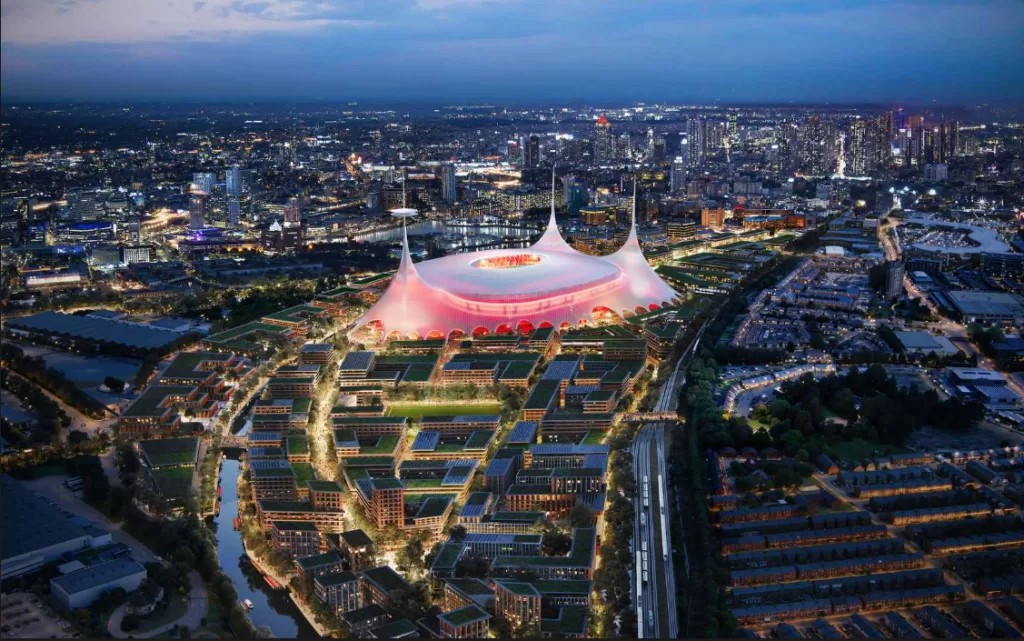
Fan Perspectives and Community Engagement
The announcement has elicited a spectrum of reactions from the fanbase. While some supporters are enthusiastic about the modern amenities and increased capacity, others are apprehensive about potential commercialization overshadowing the club’s community roots. Engaging with fans throughout the planning and development phases is crucial to address their concerns and incorporate their input, ensuring that the new stadium reflects the collective identity and aspirations of the Manchester United community.
Driving Regional Economic Growth
Key economic forecasts include:
A £7.3 billion annual contribution to the UK economy.
Creation of 92,000 jobs, stimulating local employment and business opportunities.
Catalysing wider regeneration of the Trafford area, positioning it as a global commercial hub.
Chicago’s 1901 Project
Chicago's 1901 Project is set to transform the West Side with a $7 billion investment in a 55-acre mixed-use development surrounding the United Centre....more
Will Man Utd fill the new stadium?
Living Labs advice to our stadia client is always build one less seat than you can sell. Dead seats send ticket prices plummeting and cost a fortune to maintain. They all need cleaned, maintained and replaced whether they are used or not.
Living Labs advice to our stadia client is always build one less seat than you can sell. Dead seats send ticket prices plummeting and cost a fortune to maintain. They all need cleaned, maintained and replaced whether they are used or not.
Manchester United’s ambitious stadium expansion presents a critical opportunity to showcase strategic thinking in ticket pricing—a balance that could define the club’s relationship with its fanbase for generations. Learning from recent precedents, such as Liverpool’s Anfield redevelopment, offers valuable lessons. Despite increasing capacity from 45,000 to over 61,000, Liverpool allocated most additional seats to fans within the membership scheme rather than opening up more coveted season ticket slots. The strategy prioritised higher-yield ticket sales but left long-standing supporters on waiting lists—a move that Manchester United would be wise to assess carefully.
“Manchester United have a vast global fanbase, but they are a long way away. The in stadium product should be focused on fans and experience seeker but there won’t ever be more than a few thousand international travelling fans.” warns Mark Alexander, Living Lab CEO.
This global-commercial focus, while lucrative, risks alienating loyal fans if ticket strategies are not meticulously designed.
The Manchester United Supporters’ Trust (MUST) echoes this concern, urging the club to tread carefully. “We look forward to further consultation with the club to address these critical questions. If United can deliver a stadium as stunning as the proposals suggest—without damaging the atmosphere, hiking ticket prices, or diverting funds from essential investments—then this could be an exciting chapter in our history.”
Dig deeper into Living Labs work
Chicago’s 1901 Project
Chicago's 1901 Project is set to transform the West Side with a $7 billion investment in a 55-acre mixed-use development surrounding the United Centre....more
Motorsports innovation as an Industrial Accelerator
Living.Lab Motorsport project. A how-to for those looking to harness Motorsport’s culture, processes, and technologies to supercharge their high-value engineering and manufacturing sectors.
FAQS ManchESTER UNiTED NEW Stadia
When will the New Manchester United Arena open?
The New Manchester United Arena is scheduled to open for the 2030-31 football season.
Who is designing the New Man U Arena?
Renowned architects Foster + Partners are leading the stadium’s visionary design.
How will the New Man U Arena benefit the local community?
It is projected that this will contribute £7.3 billion annually to the UK economy and create 92,000 jobs in areas such as construction management, food and beverage, and others. The community will also benefit from the new Manchester United facilities, along with infrastructure improvements like transportation enhancements and regeneration initiatives.
What will be the capacity of the New Man U Arena?
The stadium will accommodate 100,000 spectators, making it the largest in Britain.
What happens to Old Trafford after the new stadium opens?
Old Trafford is set for dismantling, with future use of the site currently under discussion.
Will the New Man U Arena host events other than football?
Yes, it will feature versatile spaces to host global events, concerts, and community activities.
How is sustainability incorporated into the stadium's design?
The design includes solar energy systems, rainwater harvesting, and public spaces that promote environmental responsibility.
Living.Lab
Let’s build the future together
Send us a Message
Locations
- London
- Dubai
- Milan
- Email us



